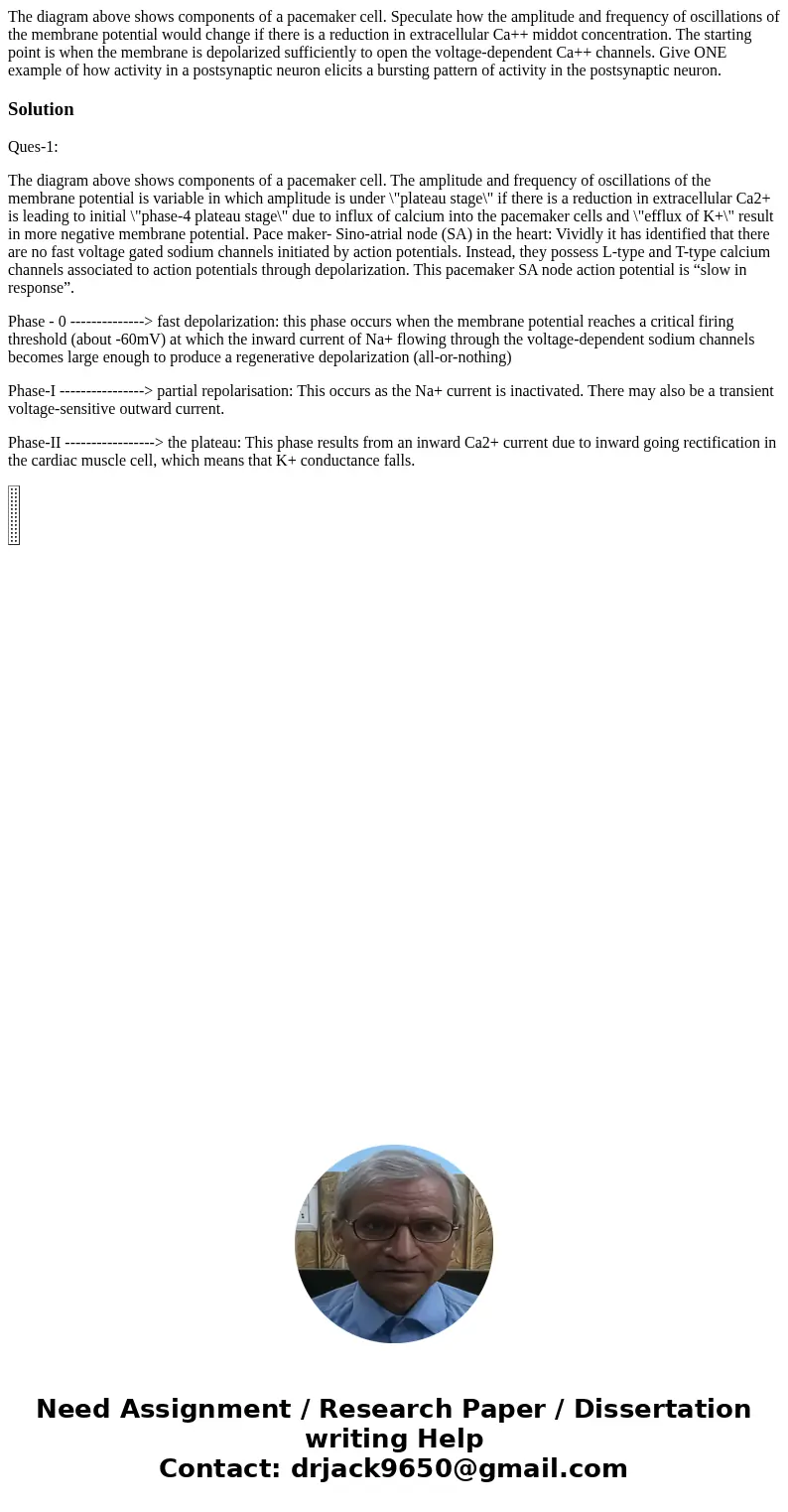The diagram above shows components of a pacemaker cell Specu
Solution
Ques-1:
The diagram above shows components of a pacemaker cell. The amplitude and frequency of oscillations of the membrane potential is variable in which amplitude is under \"plateau stage\" if there is a reduction in extracellular Ca2+ is leading to initial \"phase-4 plateau stage\" due to influx of calcium into the pacemaker cells and \"efflux of K+\" result in more negative membrane potential. Pace maker- Sino-atrial node (SA) in the heart: Vividly it has identified that there are no fast voltage gated sodium channels initiated by action potentials. Instead, they possess L-type and T-type calcium channels associated to action potentials through depolarization. This pacemaker SA node action potential is “slow in response”.
Phase - 0 --------------> fast depolarization: this phase occurs when the membrane potential reaches a critical firing threshold (about -60mV) at which the inward current of Na+ flowing through the voltage-dependent sodium channels becomes large enough to produce a regenerative depolarization (all-or-nothing)
Phase-I ----------------> partial repolarisation: This occurs as the Na+ current is inactivated. There may also be a transient voltage-sensitive outward current.
Phase-II -----------------> the plateau: This phase results from an inward Ca2+ current due to inward going rectification in the cardiac muscle cell, which means that K+ conductance falls.

 Homework Sourse
Homework Sourse